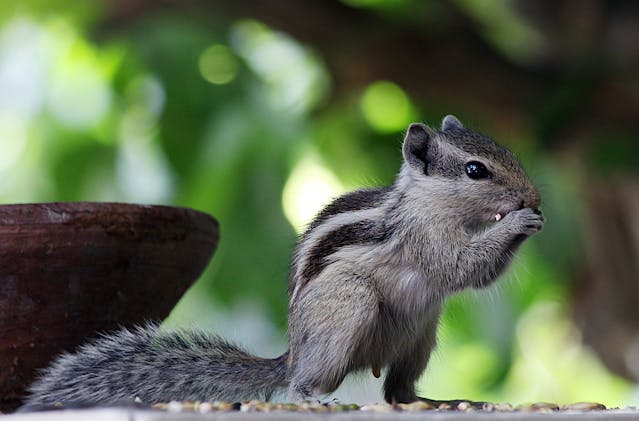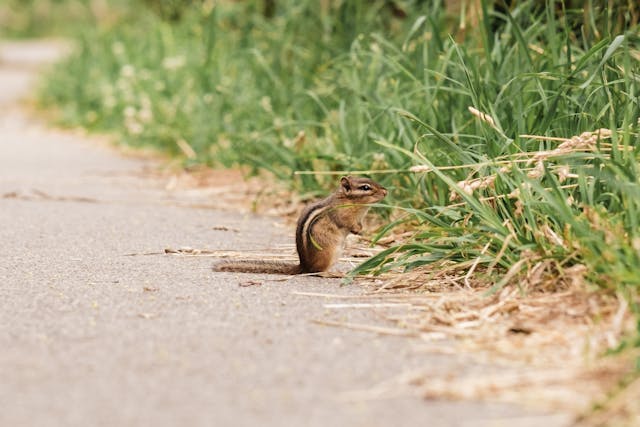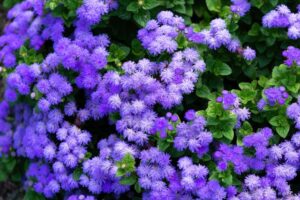A healthy ecology includes chipmunks, despite the fact that they sometimes harm garden plants.
Chipmunks are very cute with their striped bodies and interesting activities. It’s entertaining to watch them stuff acorns, berries, and seeds into their plump cheeks. However, if chipmunks are causing damage to your grass or plants, you may use these useful ideas to avoid chipmunk issues and safely remove chipmunks from your property.
Chipmunks: Allies or Enemies?
In contrast to other “garden pests,” chipmunks often inflict less harm, and frequently, other animals like voles, moles, and rats are really responsible for a large portion of the harm that is ascribed to chipmunk activities. Gardening headaches may be greatly reduced by learning to coexist with a few chipmunks. Furthermore, there are some ways in which chipmunks help improve gardens and other surroundings.
A healthy environment is indicated by the abundance of chipmunks, which also provide as a significant food supply for bigger species like owls, bobcats, and hawks. Furthermore, by their habit of burying seeds and nuts, chipmunks contribute to the germination of several plants and trees by aerating soils during their digging activities. You could discover several things to like about chipmunks if you let them stay in your life.

Indications of Chipmunk Behavior
Since chipmunks are most active during the day, you could see them darting around your yard and entering and exiting bird feeders. However, if you’re not quite sure if you have to deal with chipmunks or another kind of pest, watch out for these telltale symptoms of chipmunk activity:
missing tubers and flower bulbs. Although flower bulbs are often consumed by voles, mice, and other rodents, chipmunks may also nibble on dahlias, crocuses, tulips, and other ornamentals. In your garden, you could sometimes come across damaged bulbs or perhaps have bulbs that never sprout because chipmunks got to them first.
harm to crops. Although they usually don’t do much harm to food crops, chipmunks may bite tomatoes, beans, maize, and other vegetables, particularly as these crops start to mature. Fresh strawberries are a favorite food for chipmunks, who have a special fondness for berries.
Little tunnels and holes in lawns and flower beds. Chipmunk tunnels are smaller than those of moles and voles, and they do not pile dirt at the openings to their burrows. However, if chipmunks are around, you can discover tiny, one to two-inch-wide tunnels or holes in your grass or flower beds.
How to Avoid and Remove Chipmunks
Even in the best of situations, chipmunk removal may be quite labor-intensive and ineffective. Usually, it’s better to concentrate on keeping chipmunk populations from growing by limiting food supplies and using organic deterrents that discourage furry guests from entering gardens.
Eliminate Food Sources
The most frequent cause of a spike in chipmunk numbers is an excess of food. Therefore, the first step to encouraging chipmunks to migrate elsewhere or keeping them from invading your yard is to decrease the amount of food sources that they have access to.
Put bird feeders away for the time being, store pet food and bird seed in pest-proof containers, and pick up fallen fruit and spilled seed. If you still want to utilize your bird feeders, think about using seeds like thistle or safflower that are less appealing to chipmunks.
Points of Access Security
Because of their tiny size, chipmunks can manage to get into attics and other unwelcome locations. It may be much more difficult for chipmunks to squeeze through openings in fence and the walls of your house, garage, or potting shed if you cover them with grates or hardware cloth. Before you conceal them, just make sure that no animals are hanging around in these hiding places.
Make Sure Your Garden Is Clean
Chipmunks, like other animals, like natural settings, which is why they tend to stay around lawns with overgrown bushes, thick grass, open compost piles, and piles of wood or rock. Removing thick grasses and trimming back plants might increase chipmunk vulnerability and perhaps cause them to relocate. Purchasing a compost bin and covering it while not in use could be something you want to consider while you’re at it.
Raise Plants That Repel
Chipmunks are enamored with tulips and crocuses, but they are not as fond of some other flora. For example, chipmunks dislike the smell of alliums, sage, marigolds, and lavender, and they usually avoid daffodils. By using these herbs and flowers as companion plants, gardens may become somewhat more pest-proof and deter chipmunks from munching on surrounding plants.
Add the bulb cages and hardware cloth.
It’s always annoying to lose vegetables and flower bulbs to rodent damage, but you can protect plants from chipmunks by covering them with a little piece of 1/4-inch hardware cloth. Hardware cloth may be used in a variety of ways, such as lining the bottom of raised beds, covering just planted seeds, or gently burying it into the soil to protect plant roots. Consider planting your bulbs within pre-made bulb cages or create your own DIY cages by gently wrapping your bulbs in hardware cloth or chicken wire if you’re growing bulbs and dahlia tubers.
Put Chipmunk Baffles in Place

Although chipmunks are more likely to congregate in gardens with bird feeders, you may not be ready to take down your feeders just yet if you like seeing songbirds. In such situation, think about making an investment in a rodent-proof bird feeder. To prevent chipmunks from climbing up, install your feeder on a metal pole with a squirrel baffle. Since chipmunks are skilled jumpers, placing feeders away from trees and overhanging branches can improve your results even more.
Consider using natural repellents.
There is a broad number of repellent remedies available for gardeners to use, but some are more effective than others in keeping chipmunks away. In general, using many natural repellents simultaneously together with the previously mentioned exclusion techniques will provide the optimum effects from them. Additionally, you may want to periodically switch up your product line to prevent chipmunks from becoming used to certain powders, sprays, decoys, and other deterrents.
Some gardeners have had success controlling chipmunks using owl decoys or ultrasonic repellents. Sprays of cayenne pepper, predator urine, blood meal, or peppermint oil work better for other gardens. If you decide to utilize spray treatments, don’t forget to use them often over the season, particularly after a lot of rain.

Make Use of a Live Trap
Trapping is never a better alternative for controlling chipmunks than using deterrents and prevention. Not only is trapping mostly unsuccessful, but when you remove the first group of chipmunks, fresh ones will immediately relocate into your garden. In some places, trapping is prohibited, and chipmunks often don’t survive transfer.
If you’re serious about getting rid of chipmunks from your home, it’s advisable to hire a reputable pest control business to do the removal. If you want to move chipmunks on your own, make sure you always abide by local laws and ordinances and avoid using poisoned baits, which may hurt pets and non-target species like owls. Choose a live trap that is the right size, set it up in an area where chipmunks are active, bait it with peanut butter, check it often to make sure the chipmunks don’t remain in their cages for too long, handle the traps using strong gloves, and release the chipmunks at least five miles away from any human population.



